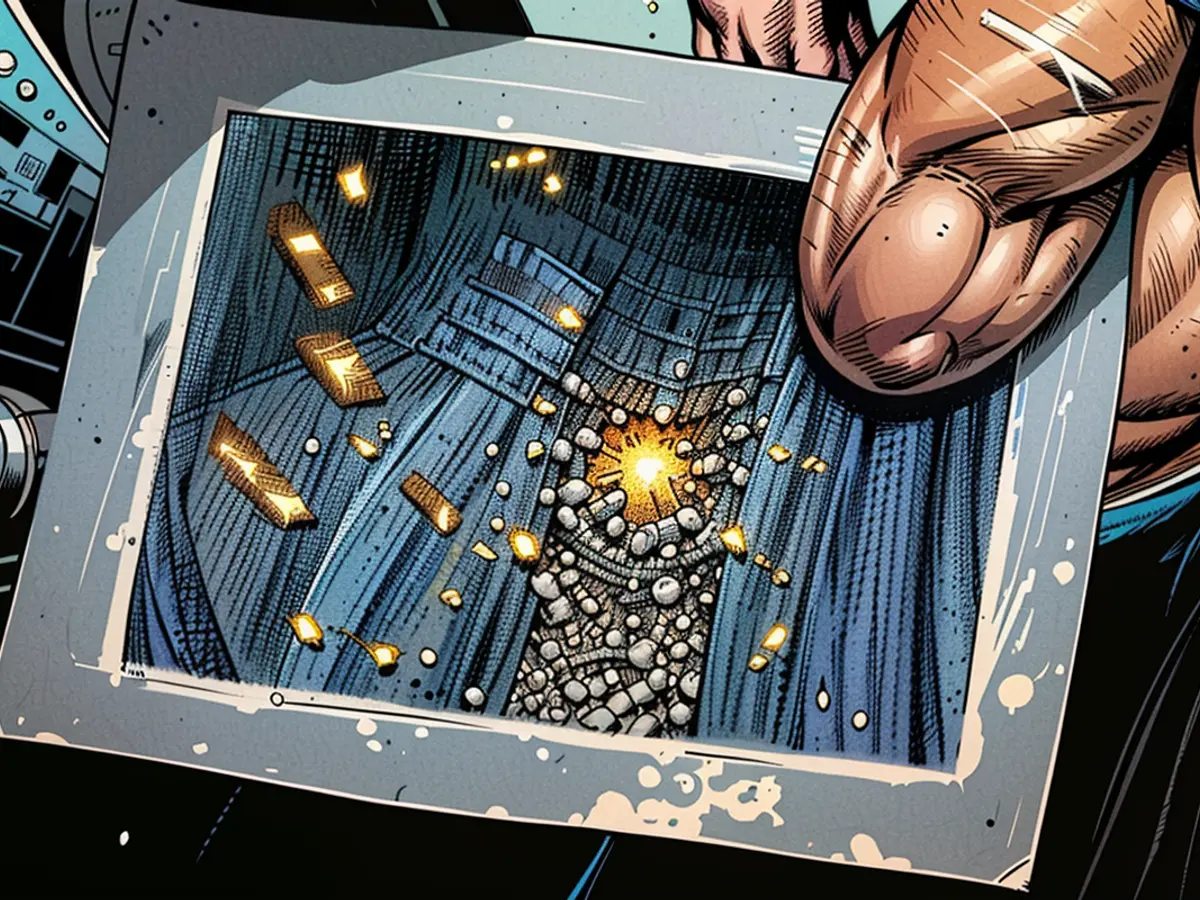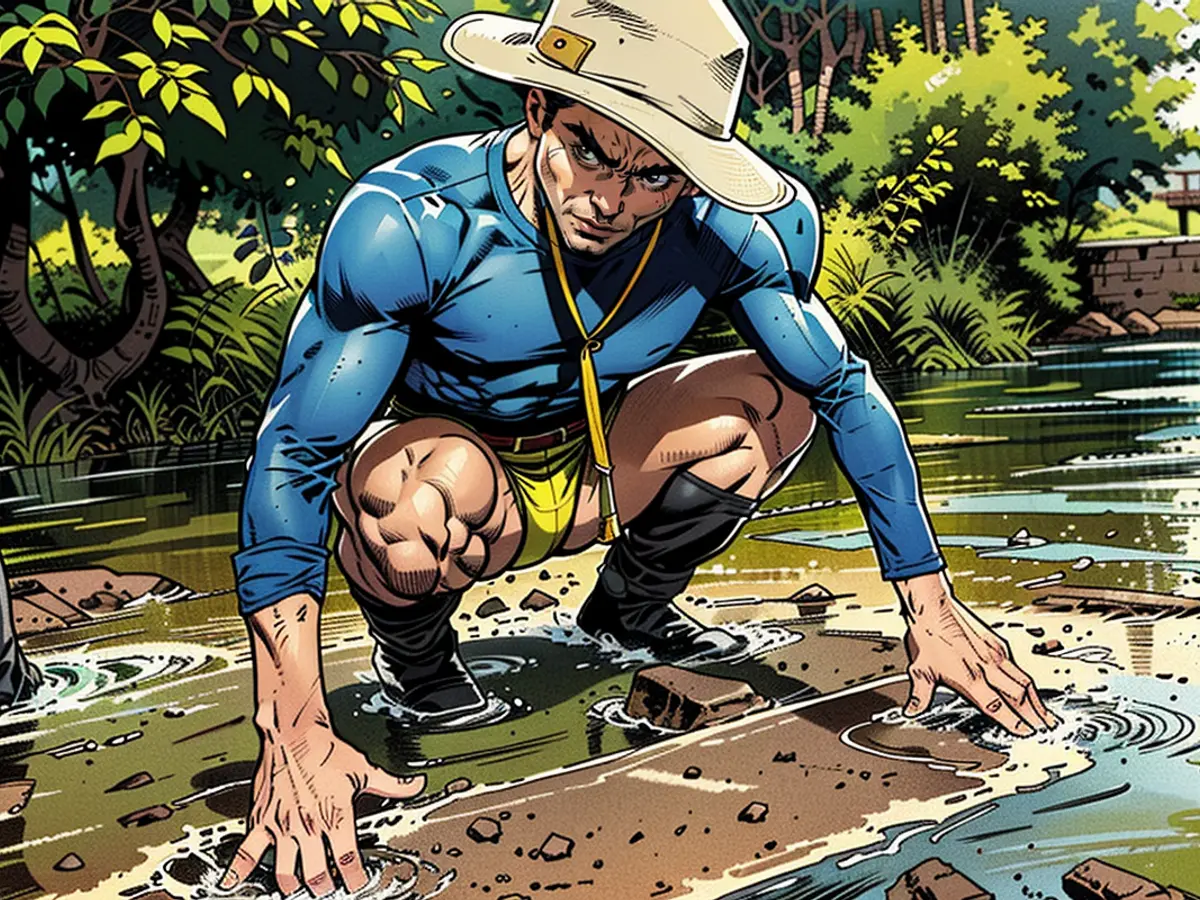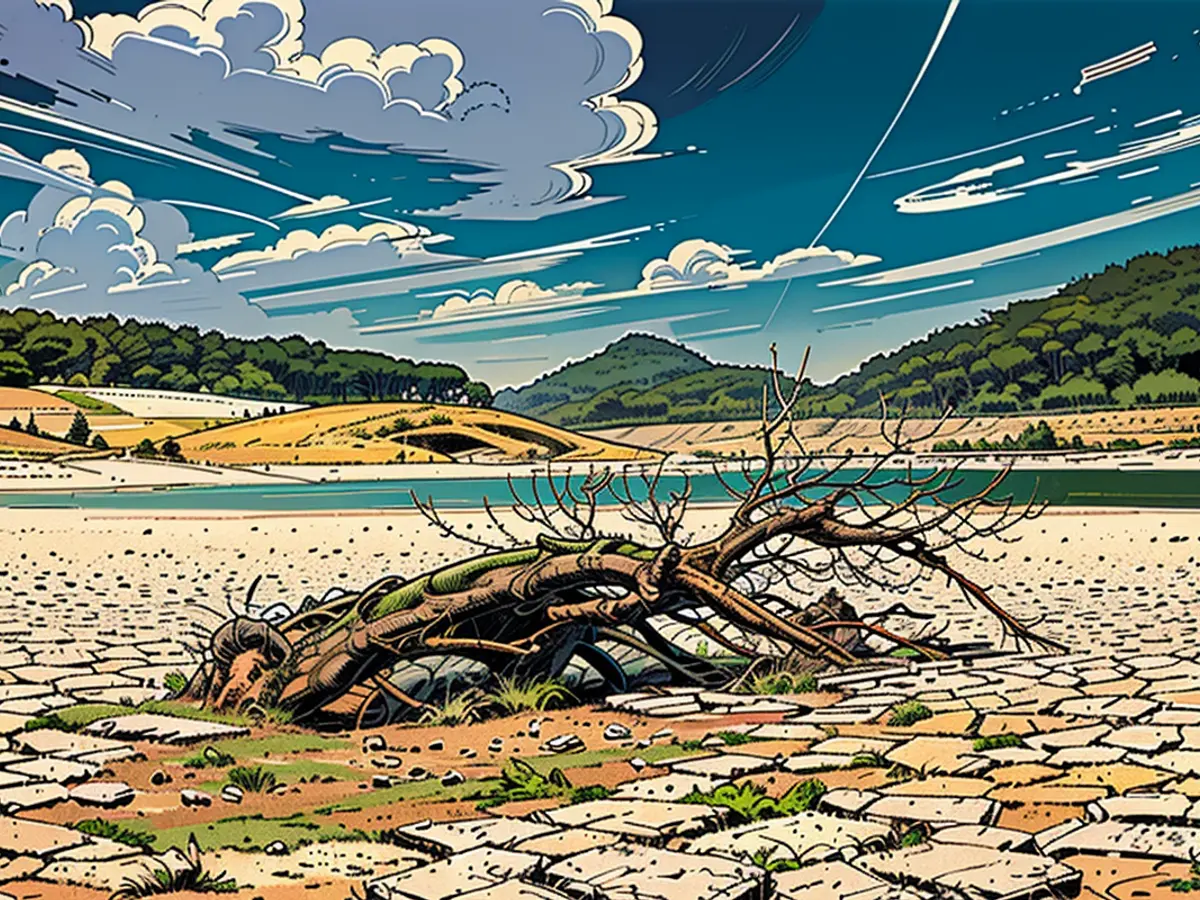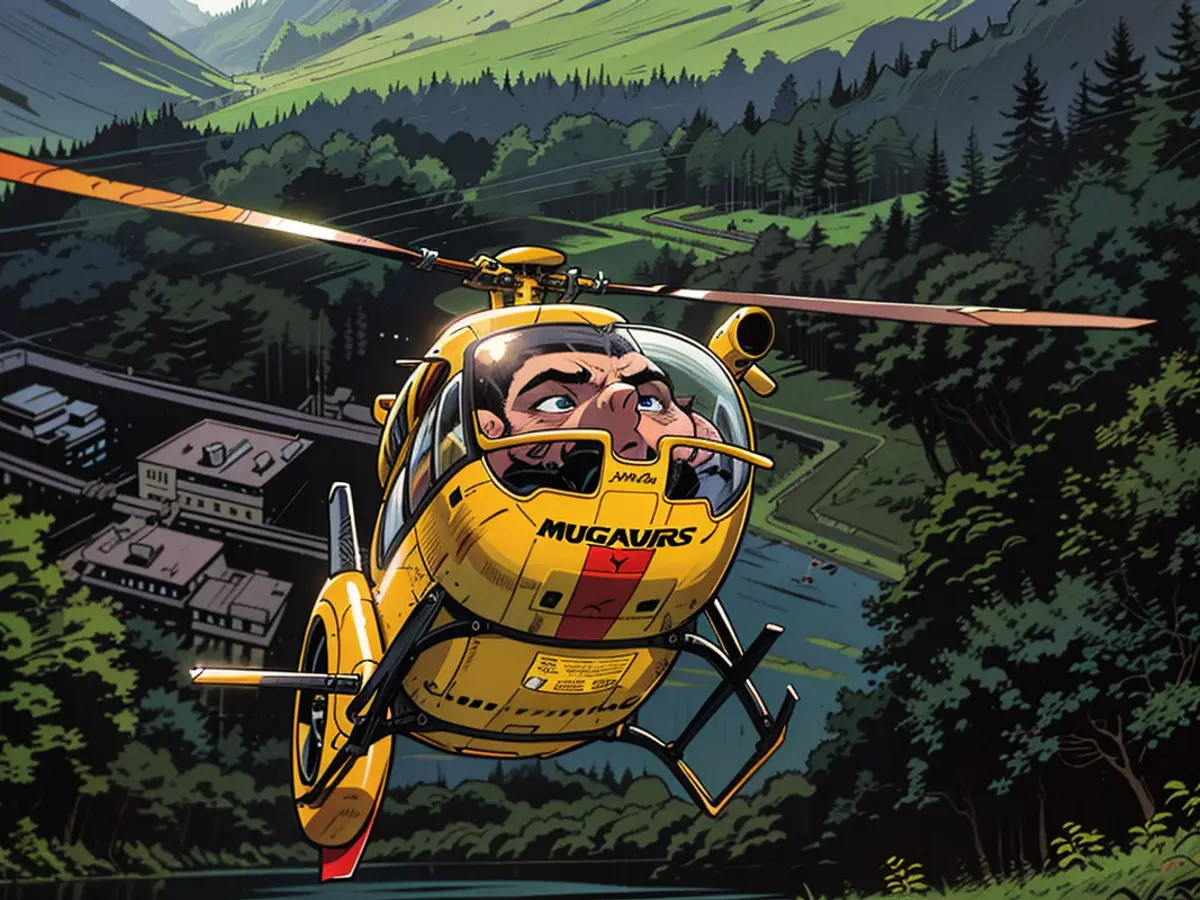The Black Forest is a gold rush
Gold is not as rare here as one might think. However, those who believe they can get rich with this hobby are mistaken. A few people in the Black Forest are trying their luck and are already happy with amounts in the milligram range.
Erik Tetzlaff, an 18-year-old from Kiel, is wading through the 12-degree cold water in his rubber boots. Equipped with a shovel, a gold pan, and a classifier, he is searching for gold in the small river Alb in Bad Herrenalb in the Black Forest. "I didn't think it would be this difficult," he says. The current is quite strong, and he and his mother had to try several times to find the right technique to wash the smallest particles of gold-bearing sand from the bottom of the river.
The two Kieler have come to Baden-Württemberg to participate in a gold panning course led by the geologist Michael Leopold. "I'm interested in minerals," says Erik. That's why his mother gave him this course as a gift. Now they are searching for the precious metal together.
For course leader Leopold, participants coming from far away are no surprise: "Gold still has its mythical aura." The demand for such offers is undiminished. And he tells the young participants: "Adults always start to spin fantasies when it comes to gold. They expect chicken-egg-sized nuggets." But most of the time, the finds are just tiny flakes, with which no fortune can be made.
"That looks nice, but it's not gold"
Unlike in the Yukon Territory in Canada, there has been no gold rush here to this day. Nevertheless, there are gold deposits and gold panners in many regions of Germany. Internet forums deal with the topic, and TV formats suggest a mix of tension, adventure, and success.
"But that doesn't correspond to the reality in our area," says Leopold. Such contributions are good marketing for gold panning courses, but in the end, it's rather fiction. On average, only one out of 20 course participants stays with it. "Then it's not about wealth, but about the proof of gold."
When a participant shouts "I'm rich" after the first glittering find, the course leader comments: "We're getting rich in experience here." Because even here, not everything that glitters is gold. The expert often exposes fool's gold, a mineral that is very common in nature. The most heard sentence on this morning is also: "That looks nice, but it's not gold." One man says: "Next time, we'll go back to the jeweler."
Twenty years ago, a pensioner in Thuringia caused a stir when he found a 9.64-gram, 2.2-centimeter-long nugget in a stream in the upper Schwarzatal while walking in the woods. It was said to have a collector's value of around 1,500 euros at the time. The material value was estimated at less than 100 euros.
Recycled gold mainly

Although it doesn't bring regular yields and the price fluctuates strongly, gold is considered a safe haven in times of crisis and is a popular investment. Among other things, the euro-dollar exchange rate, the oil price, and the political environment influence the price development. According to the German Raw Materials Agency, the largest gold mining countries are China (with an 11.4 percent share), Australia (10.2 percent), and Russia (9.6 percent).
The industry in Germany works almost exclusively with recycled gold, for example from the recycling of old gold or electronic waste. There are 250 grams of pure gold in a ton of discarded smartphones, for example. Recycled gold has a better CO2 balance than material from mines, provided it is of the same quality.
For those who prefer panning for gold instead of melting down grandma's jewelry, there are a few things to consider: Before venturing into nature reserves and private properties, or during breeding and closed seasons, it's wise to inquire with the relevant authorities. According to gold.de, wild gold panning is not a good idea. However, it's often allowed as a small weekend hobby without the intention of making a profit.
Finds can be taken home
The near-guarantee of gold finds in Bad Herrenalb is due to the region's roads being paved with Rhine river gravel, and the Alb being renourished with it, which contains gold that is now being washed out, according to course leader Leopold.
Transferring the gold flakes into a test tube is quite laborious. "You can hardly see if there's any gold," says 11-year-old Jiro Klopstra, who came to the Black Forest with his family from the Aachen region. There are still various crumbs floating in the washing pan. "Is there still something in there?" the boy asks the course leader.
However, many expert analyses reveal: copper, quartz, arsenic, semi-precious stones, slag from old forges - and, of course, fool's gold. A sewing needle can be used to test this: fool's gold shatters, real gold does not.
Participants can take their finds home. Leopold recommends: dry them on a coffee filter, sprinkle them on black paper, and laminate them. Even with the remaining sand. "Then it looks like more."
Despite the misconceptions about making a fortune from gold panning, many are drawn to the hobby. Other individuals view it as more of a proof of discovery rather than a source of wealth.
In many regions of Germany, gold panning is a popular pastime, with a few lucky participants finding milligram amounts of gold.









